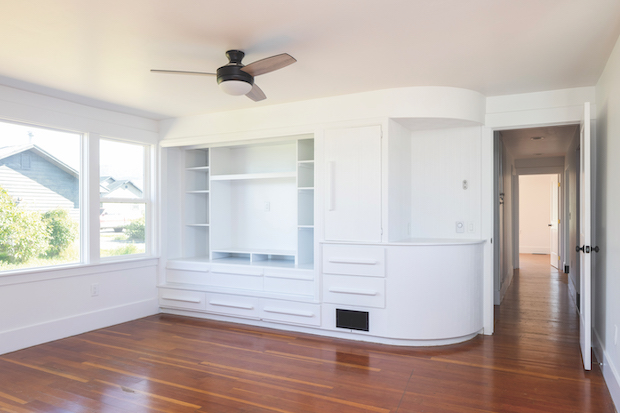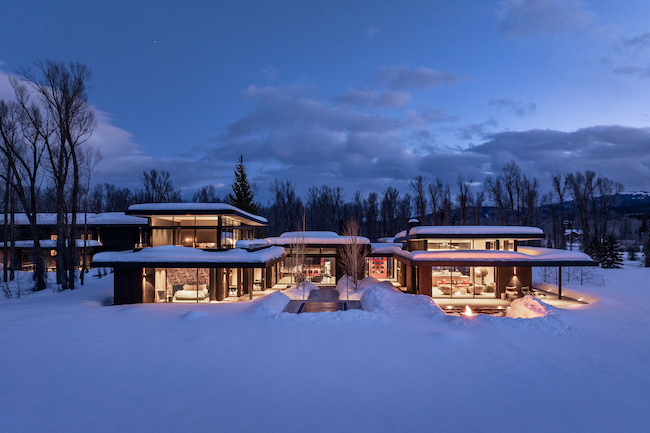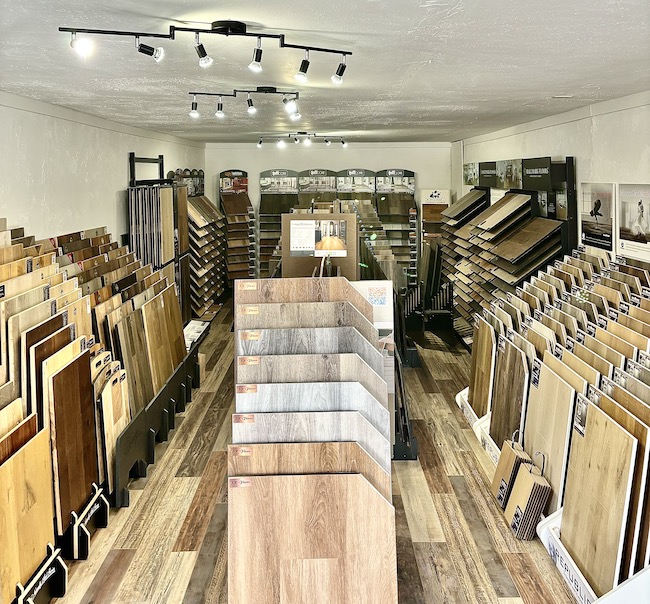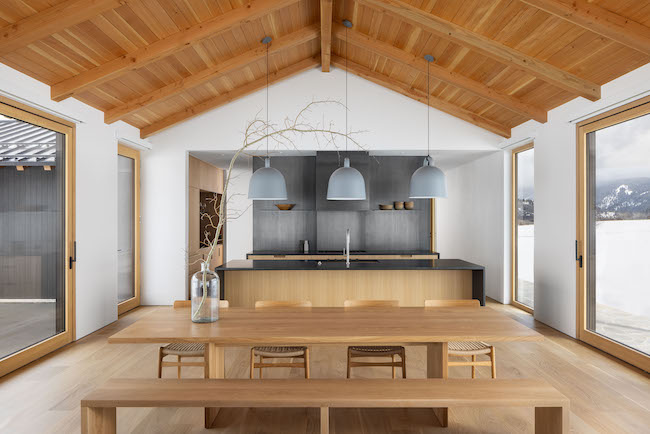A Second Act
26 Mar 2024
Esther Judge Lennox creates housing opportunities and gives historic homes a next chapter
WORDS Melissa Thomasma | IMAGES Lindley Rust unless otherwise noted
Since the first settlers arrived in Jackson Hole, resourceful denizens have been required to tap into their creative problem solving and can-do attitudes. From below-zero winters with towering drifts of snow to navigating rugged mountain passes, life in the Tetons has never been without demand. Now, while turning up the heat or driving through the hills may be easier, the community is facing new challenges: the largest of which is a dearth of housing.
Esther Judge Lennox, embracing the creativity and tenacity of other Western trailblazers, is using her passion and innovation to tackle the housing issue — and a few others while she’s at it. As the founder of the organization Shacks on Racks, Esther is at the helm of an effort to save historic buildings in Teton County by relocating and renovating them.
To date, her project has rescued 27 structures across the county. Collectively, that adds up to nearly 2 million pounds that avoided the landfill, and well over $250,000 in dump fee savings for homeowners. “Shacks on Racks is about housing, preventing waste, and preserving a part of our community heritage,” says Esther. “It’s all of those things.”
Her inspiration began in 1998, when she watched as the Roe Mansion — a 274-ton, 40x90-foot home built in 1912 — was moved from Ted Turner’s Red Rock Ranch to the University of Western Montana in Dillon. Eighteen years later, she saw an opportunity to implement a similar strategy in Jackson Hole. Esther describes her tenacity as rooted in “a common-sense belief that useful things that people need shouldn’t be thrown away, especially as Jackson Hole and the surrounding areas continue to struggle with a severe shortage of affordable housing.”
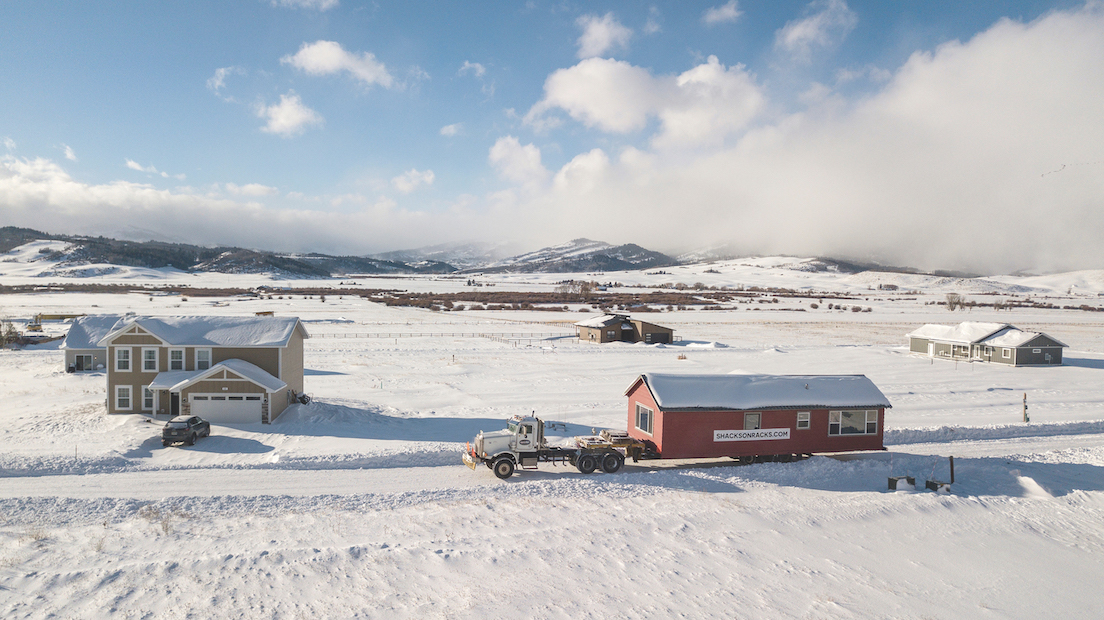
When a building is identified as a potential project, Esther and her team spread the word via social media. The structures themselves are free; a new owner just needs to move the building to a new location. Homes are strategically disassembled into manageable pieces, loaded atop semi-truck flatbeds, and caringly transported to their new locales. Depending on the size and distance, this typically carries a price tag of around $35-$65 a square foot — a fraction of the cost of new construction, which averages $1,200 per square foot in Jackson.
One of Esther’s most recent saves is a building that most locals would quickly recognize. The small red house was once tucked into the corner of Broadway and Willow; the space that will soon feature a new Jackson Hole Historical Society Museum. Known as the “Genevieve Block,” the house was built in 1949 by Roy and Genevieve Van Vleck’s daughter Jean and her husband, Bob Stewart. In it, they raised a family and operated an insurance company.
Longtime residents may recall the Stewarts’ annual holiday “Tiny Town” — a colorful outdoor display that filled the yard each winter.
In 2022, the house was dismantled and relocated to Star Valley, where it will be renovated and sold as an affordable, turn-key home to a working member of the community. “It will be the cheapest place on the market in Star Valley. That’s always been our intention,” Esther says. “This is our way of helping support our friends, family and neighbors in our constant struggle to make Jackson Hole and the surrounding areas a livable place for working families.”
Not only does it make environmental and financial sense to reuse structures that are still functional, buildings like the red house have history and character. When older buildings are demolished to make way for contemporary construction, Esther says, we lose something that we can’t get back. “The more that we let go, even houses built through the ’80s and ’90s, those are all examples for what otherwise could be the mountain character of our town.”
Many of these structures have ties even further back into local history. Homes that Shacks on Racks have successfully rescued include a small house that was perched at the corner of Jackson and Hanson Street constructed by John F. Wort in 1961. In 2022, it was relocated to Bedford, Wyoming. A 1935 home constructed by William and Julia Mae Deloney was moved to a new location in Hog Island, south of town. And an upcoming move includes a stone-clad house built in 1941 by Rudy Harold; all of the stones came from a quarry behind Shadow Mountain.
Esther explains that many of these older structures fall to full demolition when the property is bought by a new homeowner. “Once you begin to renovate an older home, it has to be brought up to code,” she explains. Often, such an effort is more expensive than a new owner wants to undertake, and it’s more desirable to demolish the building and start afresh.
There aren’t many regulatory guardrails in place to protect old buildings in Teton County, either. National Historic Preservation stan- dards are based on East Coast architecture, Esther explains. “Their checklist criteria for a historic structure that requires preservation is harder to apply in the West. Log cabins — and other kinds of build- ings in Teton County — don’t necessarily fit that vision.” The Teton County Historic Preservation Board reviews each demolition permit application filed in the Town of Jackson and has the power to rec- ommend a 90-day stay to allow time to find an alternative to demolition if the structure possesses historic or architectural significance. The county, however, does not require this kind of review before approving a demolition permit outside town limits.
A demolished building is no small amount of material, either. The red house, for example, would have generated 120,600 pounds of refuse and cost $19,500 to bring to the dump. “It’s not hard to look at it and say, we’re better than this,” Esther says, advocating for the effort to counter wasteful habits and promote the reuse of perfectly good materials.
“Shacks on Racks is good and beautiful, but we need preservation clauses, we need flexibility around regulations and codes,” says Esther. While she’s determined to keep fighting for both the legacy of local character as well as safe, stable housing for working families, larger community tides need to continue shifting. “I’m absolutely proud of what I do,” she says. “But Shacks alone is not enough.”

